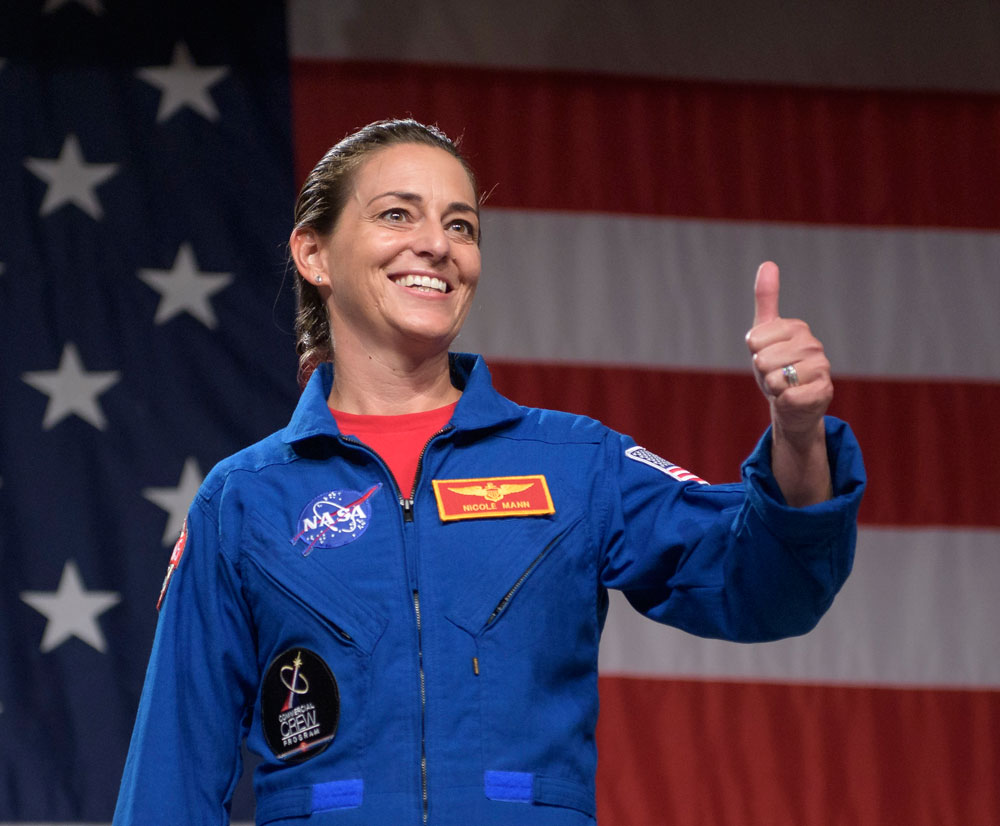In late September, Space-X Crew, the fifth crewed operational NASA Commercial Crew flight of a Crew Dragon spacecraft, and the eighth overall crewed orbital flight launched into the cosmos and traveled to the space station. But unlike any other space mission in history, this one was led by mission commander Nicole Aunapu Mann, a colonel for the U.S. Marines, the first woman commander of a NASA Commercial Crew Program launch, and the first Native American woman in space.
Before ever setting foot in NASA territory, Mann attended the U.S. Naval Academy for her undergraduate degree and Stanford University for her graduate degree, both of which were in mechanical engineering. Mann was commissioned as a second lieutenant in the United States Marine Corps in 1999, completed flight training at The Basic School in Quantico in 2001, and began her operational flying career with her wings of gold as Naval Aviator by 2004. During this assignment, she deployed twice with CVW-1 aboard the USS Enterprise and flew combat missions in support of Operations IRAQI FREEDOM and ENDURING FREEDOM.
Upon return from her second deployment, Mann reported to the United States Naval Test Pilot School, Class 135, at NAS Patuxent River, Maryland where she began her Developmental Test tour at Air Test and Evaluation Squadron TWO THREE (VX-23) as an F/A-18 Test Pilot/Project Officer. While at VX-23, Mann executed a variety of flight tests, including loads envelope expansion, flying qualities, carrier suitability and ordnance separation in the F/A-18A-F.
In the spring of 2011, Mann assumed duties as the VX-23 Operations Officer and was assigned to the PMA-281 as the Joint Mission Planning System — Expeditionary (JMPS-E) Integrated Product Team Lead just a year later. Before being selected as a NASA astronaut soon after, Mann’s military service accumulated more than 2,500 flight hours in 25 types of aircraft, 200 carrier arrestments and 47 combat missions in Iraq and Afghanistan.
Her service earned her two Air Medals, two Navy and Marine Corps Commendation Medals, two Navy and Marine Corps Achievement Medals, along with several other honors for her various academic, flight and military successes.
In 2013, Mann was selected as one of the eight members of NASA Astronaut Group 21 and completed her training two years later. She has since served as a T-38 Talon Safety and Training Officer and was the Assistant to the Chief of Exploration. She led the astronaut corps in the development of the Orion spacecraft, Space Launch System and Exploration Ground Systems. Her mission command to the International Space Station with Crew-5 was Mann’s first time traveling to space.
With Mann at mission command, Crew-5 additionally consisted of Navy Commander turned astronaut Josh Cassada, Japan Aerospace Exploration Agency astronaut Koichi Wakata and Roscosmos cosmonaut Anna Kikina. While on the space station, the team studied new biological technology advancements, such as the possibility of 3D printing human cells.
Mann is also confirmed to be a member of the Artemis program, the mission taking a group of astronauts back to the Moon for the first time since 1972. The Artemis program will launch in 2024 and cite one of the crew members as the first woman on the moon.
“It’s very exciting,” Mann told Indian Country Today upon first learning she would be the first Native American woman to officially be going to space, “I think it’s important we communicate this to our community, so that other Native kids, if they thought maybe that this was not a possibility or to realize that some of those barriers that used to be there are really starting to get broken down.”
Sources: NASA, Wikipedia, BBC, CBS, Indian Country Today



